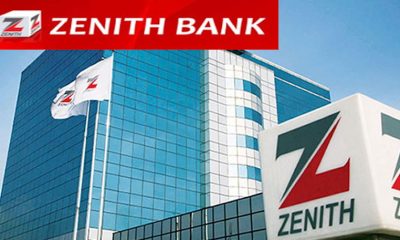Investigation by National Daily has revealed that Nigeria’s exposure to commercial foreign loans rose by $7.3 billion or 486.67 per cent in the last three years, data from the Debt Management Office (NBS) has revealed.
From $1.5 billion as at June 30, 2015, commercial loans stood at $8.6 billion by June 30 2018.
The nation’s foreign debt component also posted an increase of $11.77 billion during the same period.
National Daily gathered that Nigeria’s external debt, the DMO stated, grew from $10.32 billion as at June 30, 2015 to $22.08 billion as at June 30, 2018.
This translated to a growth of 114.05 per cent in the last three years.
According to the DMO figures posted on its website, while multilateral debt accounts for $10.88 billion or 49.28 per cent of Nigeria’s foreign debt profile, the greatest chunk of the increases in the last three years were traceable to commercial loans.
Commercial foreign loans, which stood at $1.5 billion as of June 30, 2015 recorded a $8.8 billion increase as at June 30, 2018, an indication that in the past three years, Nigwria’s exposure to commercial foreign loans posted a $7.3 billion or 486.67 per cent rise.
The World Bank accounted for 38.36 per cent of the nation’s foreign debt portfolio, with a commitment of $8.47 billion, even as the country is exposed to other multilateral organisations, including the African Development Bank (AfDB’s) $1.32 billion and that of African Development Fund ($843.47 million).
Nigeria is also indebted to the International Fund for Agricultural Development (IFAD) to the tune of $159.44 million; the Arab Bank for Economic Development ($5.88 million); the EDF Energy (France) with a portfolio of $64.96 million and the Islamic Development Bank with a portfolio of $16.92 million.
However, Nigeria’s bilateral debt account for $2.39 billion or 10.87
per cent of the country’s external debt exposure.
Such bilateral agencies include the Export-Import Bank of China ($1.91
billion); Agence Francaise de Development ( $274.98 million), Japan
International Cooperation Agency ($74.69 million); the EXIM Bank of
India ($4.76 million); and Germany (KFW),$132.24 million).
The latest debt statistics point towards a marginal decrease in the
domestic component of the country’s total public due to efforts to
rebalance the local/foreign debt ratio in the ratio of 70:30.
The DMO stated that there was a decrease in the federal government’s
domestic debt, from N12.59 trillion in December 2017 to N12.58
trillion in March 2017 and N12.15 trillion in June 2018.
The reduction in the FGN’s domestic debt stock, the DMO explained,
arose from the redemption of N198 bn Nigerian Treasury Bills in
December 2017 and another N639 billion between January and June 2018.
A total of $3 billion was raised through Eurobonds to refinance
maturing domestic debt as part of the implementation of the debt
management strategy for the purpose of substituting high cost domestic
debt with lower cost external debt to reduce debt service costs for
the government, the DMO said.
The implementation of the Public Debt Management Strategy, whose
overall objective is to ensure that Nigeria’s debt is sustainable, the
DMO noted, is already yielding positive results.
Meanwhile, the federal government has offered for subscription
two-year savings bond at 11.36 per cent and three-year savings bond at
12.36 per cent, the DMO has said.
The offer circular pasted on the DMO website showed that the two-year
bond will be due in September 2020 while the three-year bond mature in
September 2021.
The DMO disclosed that the maximum subscription was N50 million at
N1,000 per unit, subject to minimum subscription of N5,000 and in
multiples of N1,000.
According to the DMO, the bond is fully backed by the full faith and
credit of the federal government, with quarterly coupon payments to
bondholders.
The savings bond issuance is expected to help finance the nation’s
budget deficit as well as part of the federal government’s programme
targeted at the lower income earners to encourage savings and also
earn mo re income (interest), compared to their savings accounts with
banks.

 Featured1 week ago
Featured1 week ago
 Aviation1 week ago
Aviation1 week ago
 Aviation6 days ago
Aviation6 days ago
 Business4 days ago
Business4 days ago
 Business4 days ago
Business4 days ago
 Featured1 week ago
Featured1 week ago
 Education4 days ago
Education4 days ago
 Crime4 days ago
Crime4 days ago

